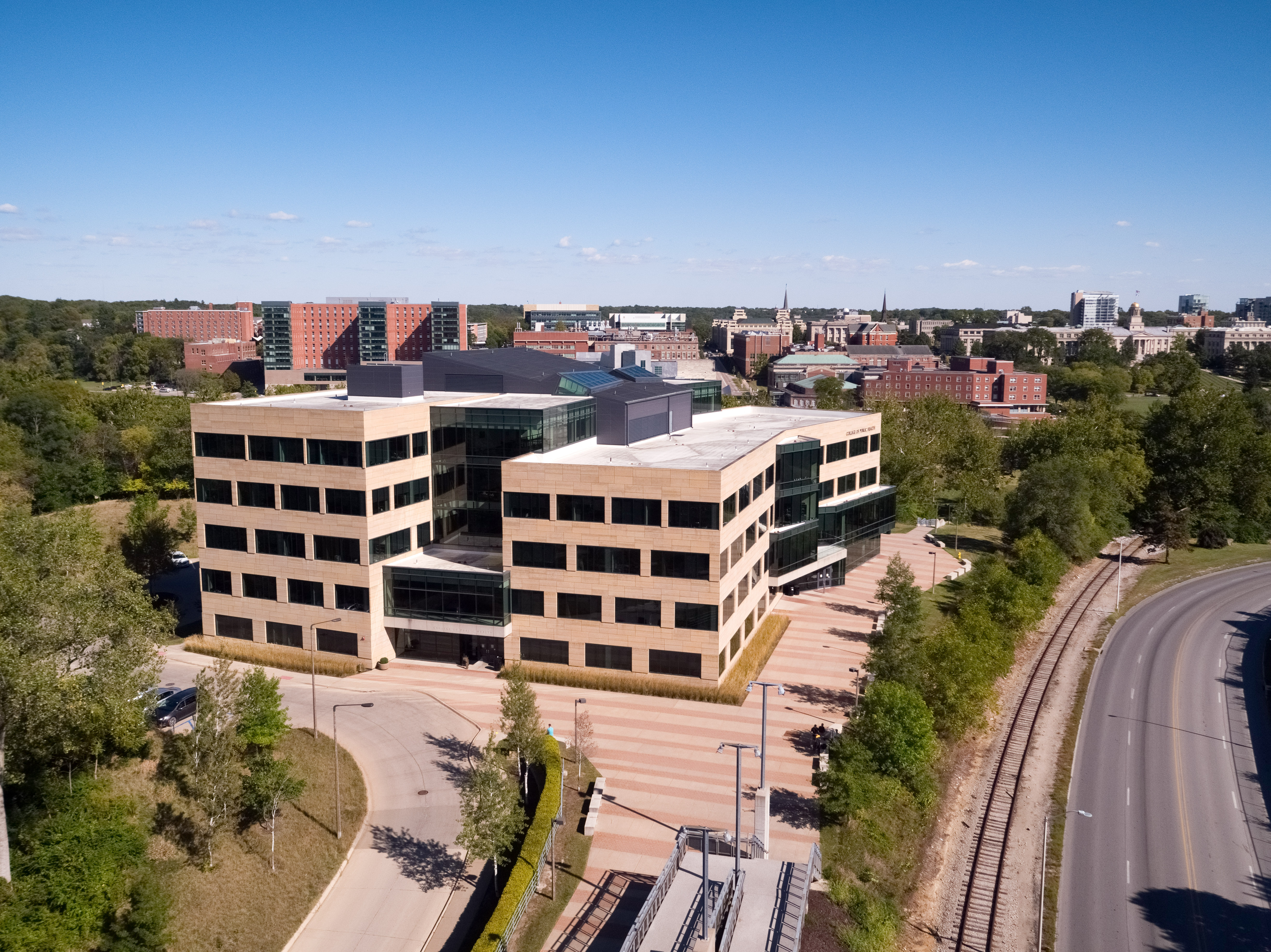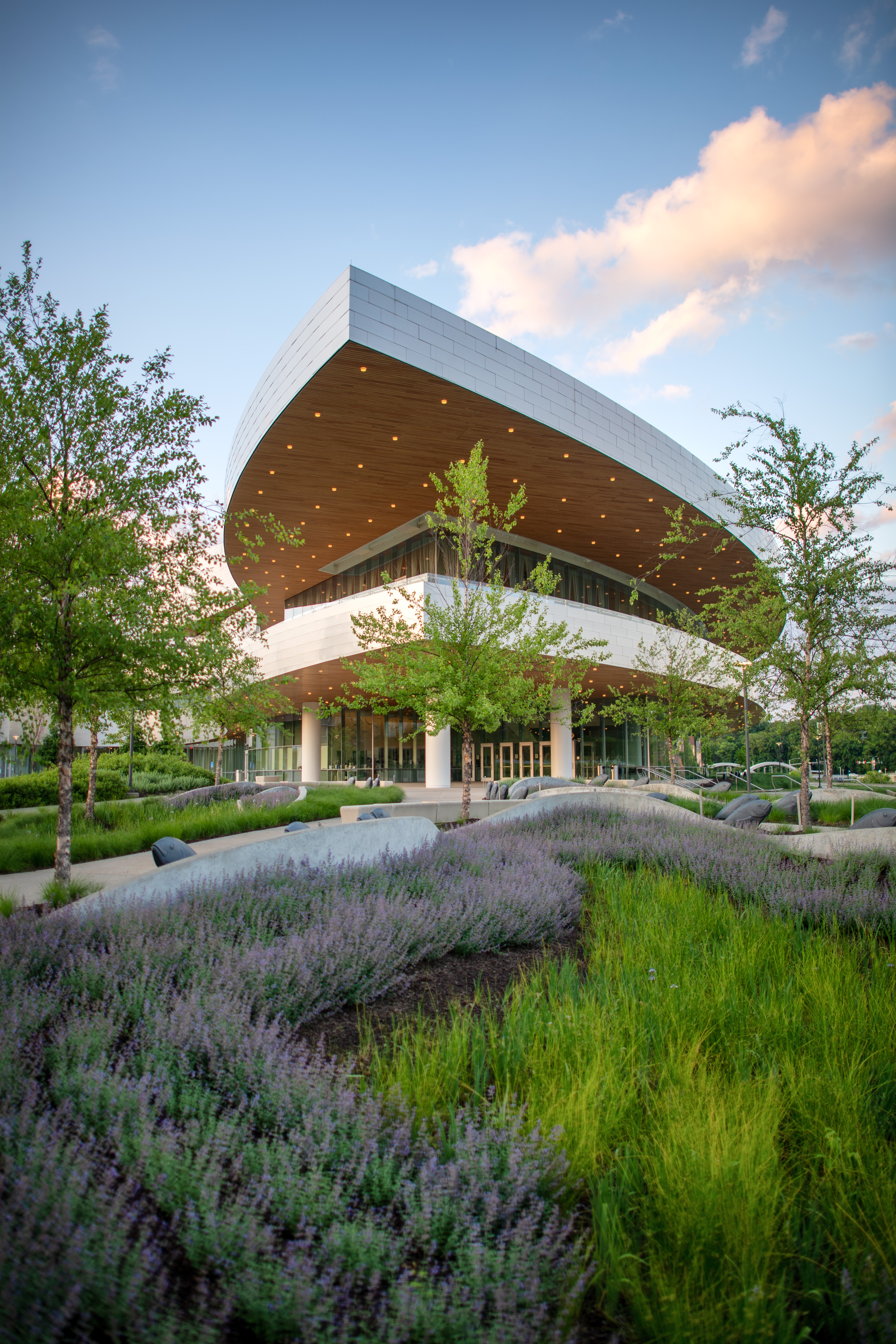College of Liberal Arts & Sciences
Sustainable Buildings on Campus

Story: Elyse Gabor
The University of Iowa is committed to sustainability. In addition to becoming a priority in the University of Iowa Strategic Plan 2022-2027, sustainability has been an important part of the campus built environment over the last decade. The University has dedicated time, energy, and money to constructing buildings that reach Leadership in Energy and Environmental Design (LEED) standards. The University has also done major renovations to old buildings to convert them to LEED standards. According to the U.S. Green Building Council, LEED certified green buildings are sustainable, producing less carbon, saving money, and using less energy and resources.
The University currently has two LEED Platinum certified buildings, the College of Public Health building and the Information Technology Facility. Twelve buildings on campus are LEED Gold certified, including Catlett Residence Hall, Mary Louise Petersen Residence Hall, Voxman Music Building, Visual Arts Building, and more. Most of the LEED Gold certified buildings were finished between the years 2015-2017. However, some older buildings were renovated over ten years ago to become LEED Gold certified. Stuit Hall was renovated in 2010, making it the first LEED renovation on campus. Three buildings on campus are LEED Silver certified. Completed in 2016, Hancher Auditorium is the most well known. In total, the University of Iowa has 2.2 million LEED certified gross square feet.
Although the University of Iowa designs its buildings to LEED standards, they no longer undergo the LEED certification process as of 2017-2018. However, each building features unique sustainable features.
The College of Public Health Building, completed in 2011, was the first academic building to receive LEED Platinum certification. The building features many windows that bring in natural lighting, automatic lights, limited water use through low-flow plumbing, and much more.
In 2011 the Carver-Hawkeye Arena was renovated, making it a LEED Gold certified building. Twenty percent of the materials installed in the renovation came from regional and recycled content. The building features no irrigation system and instead relies on water-efficient landscaping. Overall, water use reductions are above 40%.
The LEED Gold certified Papajohn Biomedical Discovery Building was completed in 2014. For construction, the building used recycled materials and regionally-sourced materials.
University buildings also feature green infrastructure stormwater management like green roofs, native landscaping, rain gardens, permeable pavers, and Bioretention Cells and Bioswales.
The College of Engineering and John Pappajohn building feature green roofs that allow plant growth while minimizing rooftop runoff. Hancher Auditorium and Pappajohn feature native landscaping that enhances stormwater infiltration that allows plants to flourish without the need for fertilizers or pesticides. The Kuhl House has rain gardens that capture and filter runoff. The College of Engineering has permeable pavers that allow water to seep through and into a storm sewer system. The College of Engineering and Quad Ravine have bioretention cells and bioswales that are landscaping features designed to filter pollutants through an engineered soil mix.
To learn more about the University of Iowa’s sustainable buildings, visit https://www.facilities.uiowa.edu/sustainable-buildings.
 |
 |